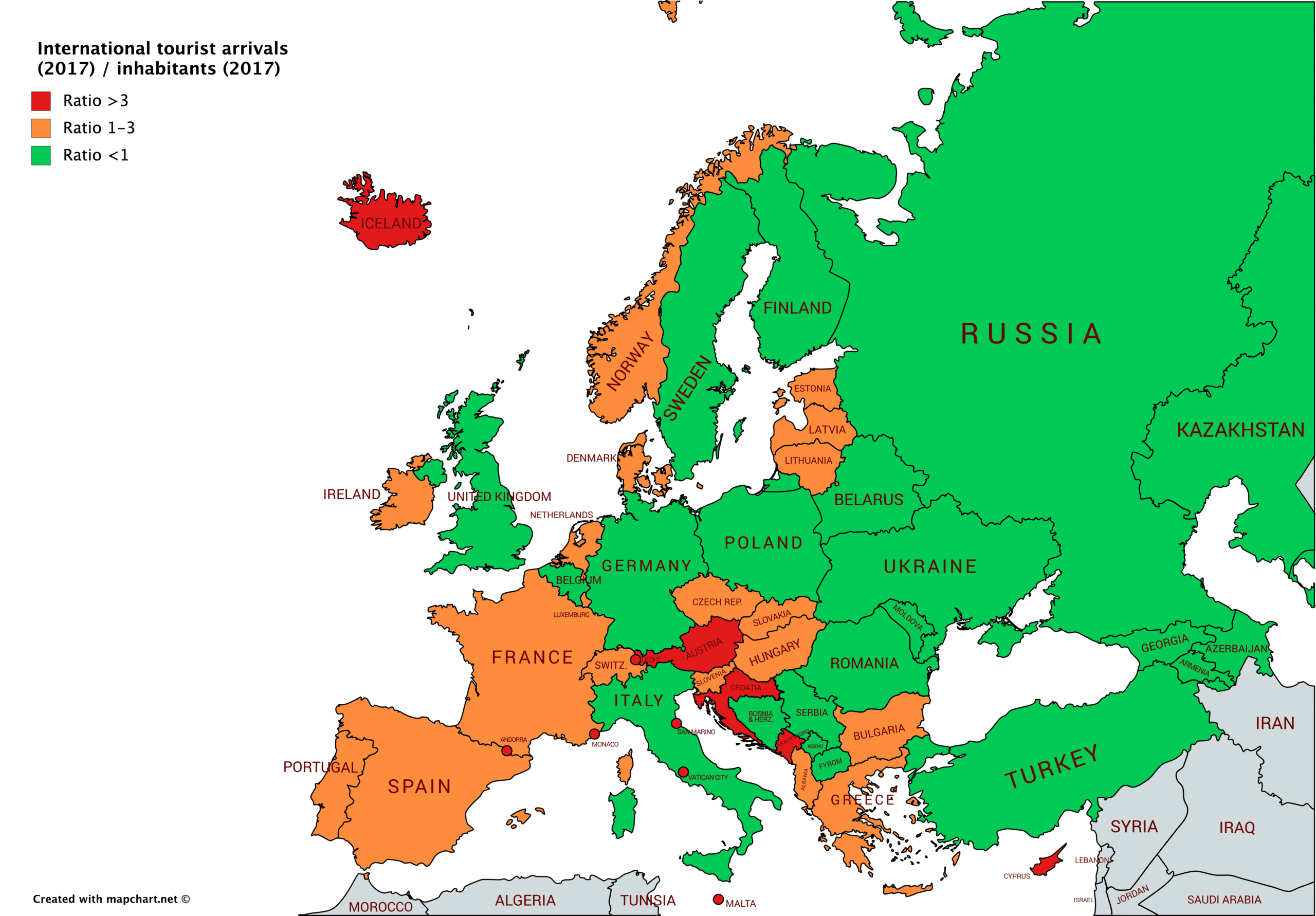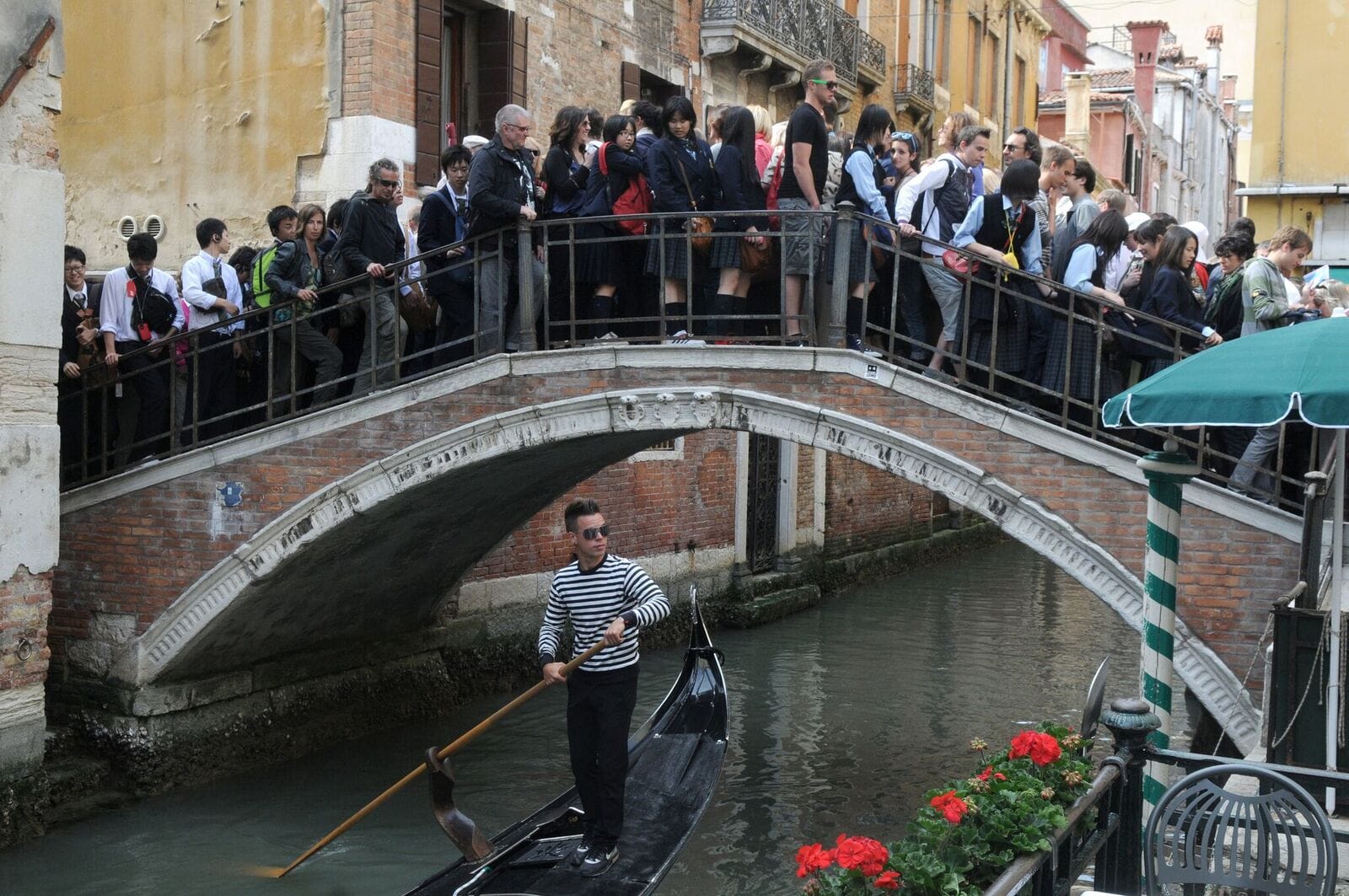
The Collins dictionary, the first dictionary to have included the word overtourism in its pages to date, though still unofficially, defines it as “The phenomenon of a popular destination or sight becoming overrun with tourists in an unsustainable way.” It is also now shortlisted by the Oxford dictionary as the word of the year 2018. So how unsustainable is unsustainable? How serious is this issue? What can we do about it? Let’s first have a look at the data.
The numbers
20 years ago, international tourist arrivals amounted to 605 million, or 10.1% of world population — at the time just a couple of millions short of 6 billion.
Flash-forward to today, the era of low-cost airliners, online booking, Airbnb, cabin luggage limits and a handful of corporations dominating the travel industry. A whole 1.7 billion people have been added to humanity, a 27% increase from 20 years ago, to today’s 7.68 billion. Where we used to have four people 20 years ago, now we have five.
During the same time, international arrivals have more than doubled (an increase of ~115%), with estimates surpassing 1.4 billion for 2018 — most probably to Europe. Global yearly growth has hovered at around 5-6% this entire time. Compared to 1998’s 10.1%, today, this number amounts to 17% of world population, a number that could reach 25% before 2025 as birth rates decelerate and more people, especially Asians, take advantage of affordable travel packages and opportunities.
This wouldn’t be a problem if this tremendous increase in tourist flow was being evenly distributed across the world. The reality, of course, is completely different.
Venice and its 600 times more tourists than residents
Let’s take the exemplary case of Venice. Almost 30,000,000 people visit the now ironically named La Serenissima each year. Venice’s population is around 50,000. What this means is that there are 50% more people (about 80,000) visiting Venice each day on average than there are actually people living there. By itself, the iconic Italian city has more visitors than the rest of the whole of Italy and would rank among the top countries in the world by number of arrivals just by itself.
Many other cities in Europe have yearly numbers of visitors that can comfortably be compared to or even greatly exceed their populations. In 2017, Iceland received 2,224,603 visitors, 6.5 times its 338,349 residents.
I’ve created the following map. Disneyficationmap.com is a cool visualization I found later.

The situation is obviously not as bad everywhere, but even seen on a continental level, Europe attracted 590 million tourists in 2016 compared to the 660 million in the rest of the world. On top of that, Europe’s largely dwindling populations means that the growing number of tourists will push these stats to even greater extremes.
But more tourism means more money, right?
The repercussions of all this are still difficult to properly assess: at no point in history have so many people moved around in such great numbers. Despite growth in the sector translating into clear financial gain across the board, citizens from everywhere in Europe are increasingly willing to take the quantifiable economic hit over allowing their cities to further devolve into cogs of the tourism machine.
The newfound wealth created by overtourism might indeed seem enviable to those who have not yet experienced the associated economic benefits, but the rising costs of land and life in affected areas render growth much less significant, or attractive. At the same time, the negative effects can thoroughly deplete a city of its value; who wants to live in an overdeveloped dumpster where nothing of enduring consequence seems to ever happen? Nobody wants to be surrounded by devastated nature and depleted resources, either. Overtourism can be easily compared to overconsumption in this regard.

Our plan
All that taken into account, it seems unavoidable that as global tourism increases, the top destinations will reap the biggest benefits, just like with any other mass industry. The Pareto principle, or 80/20 rule, predicts that 20% of destinations will tend to attract 80% of visitors and vice versa. Still, here at Spotted by Locals we believe that it doesn’t have to be that way. We know that if given enough incentive, a big part of the 80% of travellers who would otherwise choose the 20% of most frequented places might choose an alternative.
How about this: choosing to fight overtourism by selecting one of the huge number of less-frequented cities around the world means you’ll discover a place that still hasn’t been ruined by mainly or exclusively marketing itself to tourists. You’ll be giving your hard-earned money to local businesses and places that could use the help instead of big travel conglomerates that are only reaping the benefits of overtourism and suffer few of the repercussions. You’ll be experiencing true hospitality and honest gratitude for daring to be unconventional and supporting the ‘underdog’ instead of facing the cold indifference or even open hostility that can be found at some of the cities worst affected by overtourism.
We began Spotted by Locals ten years ago with the goal to diversify tourism on a local level by helping travellers experience cities like locals. Now we want to take the same principle a level further and make it global. In the last couple of years, we have placed an emphasis on creating city guides for less-visited hidden travel gems like Yerevan, Tbilisi, Prishtina and Podgorica.
We plan to continue along this trajectory with renewed ambition. Thanks for your support in helping us create a real alternative, an antidote to overtourism; to help defend diversity; to help us create a bigger, more interesting world.
Live in one of these cities, or another cool city we need to cover and want to help? Please apply here:
https://www.www.spottedbylocals.com/become-a-spotter/



